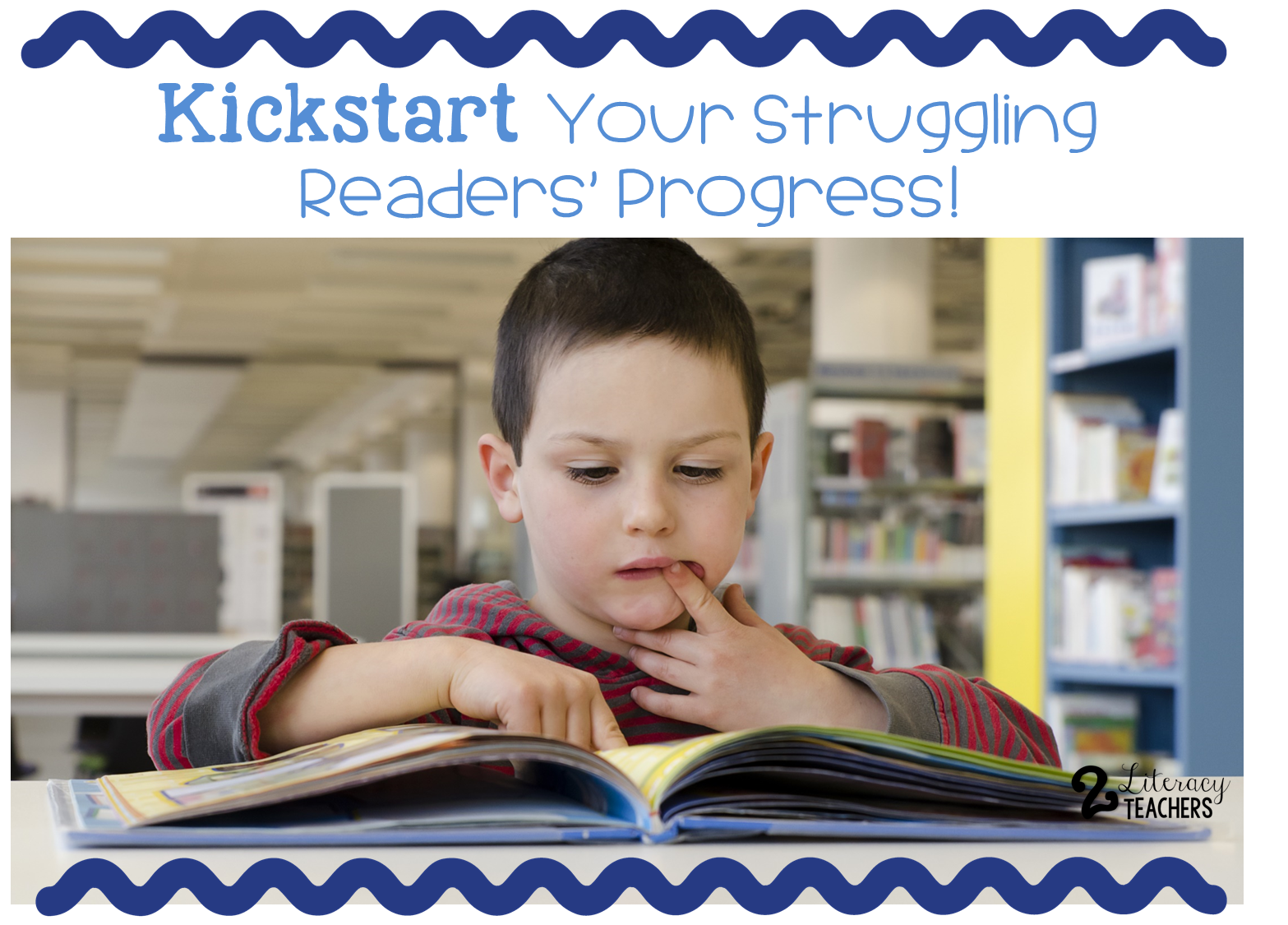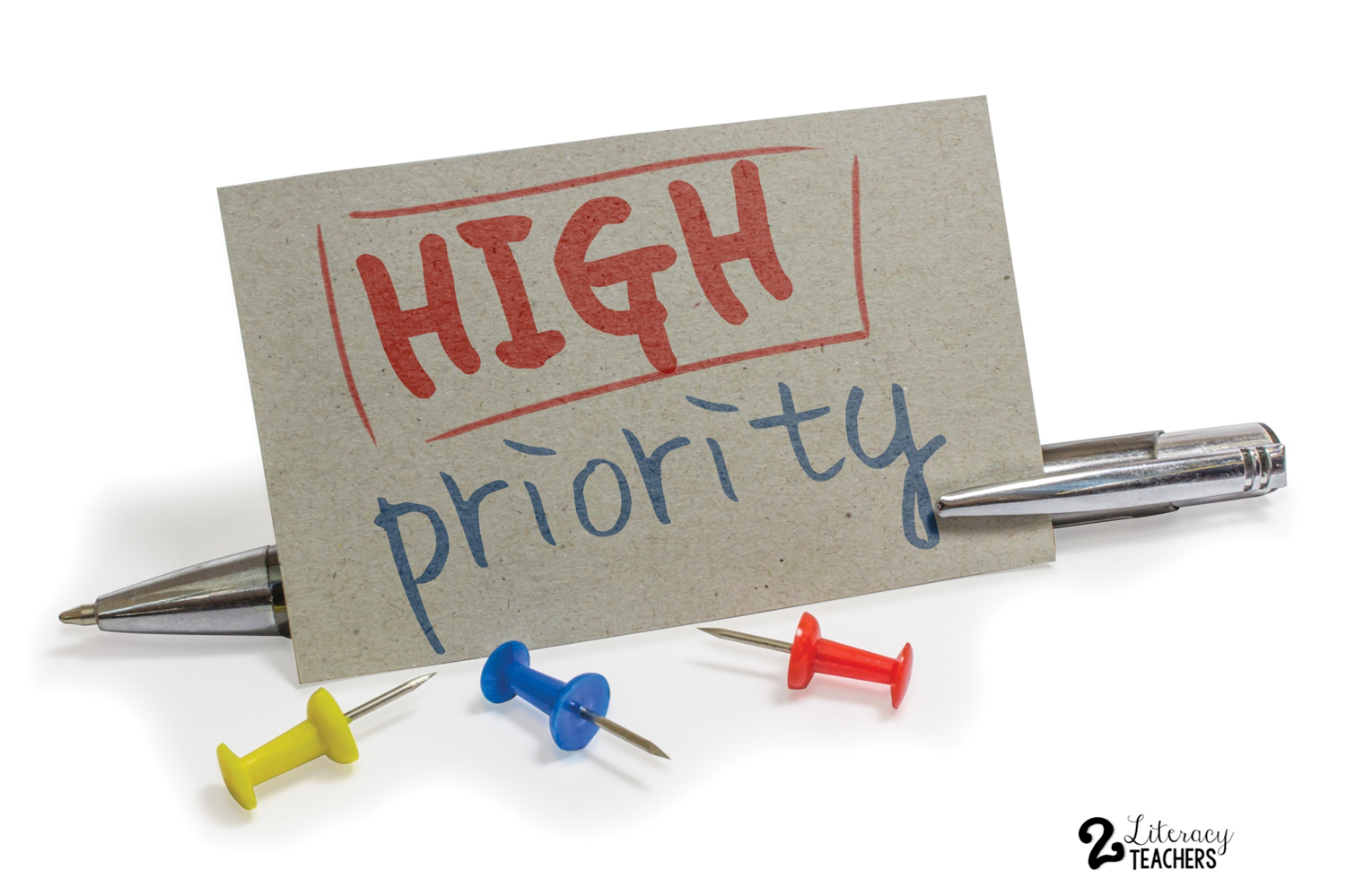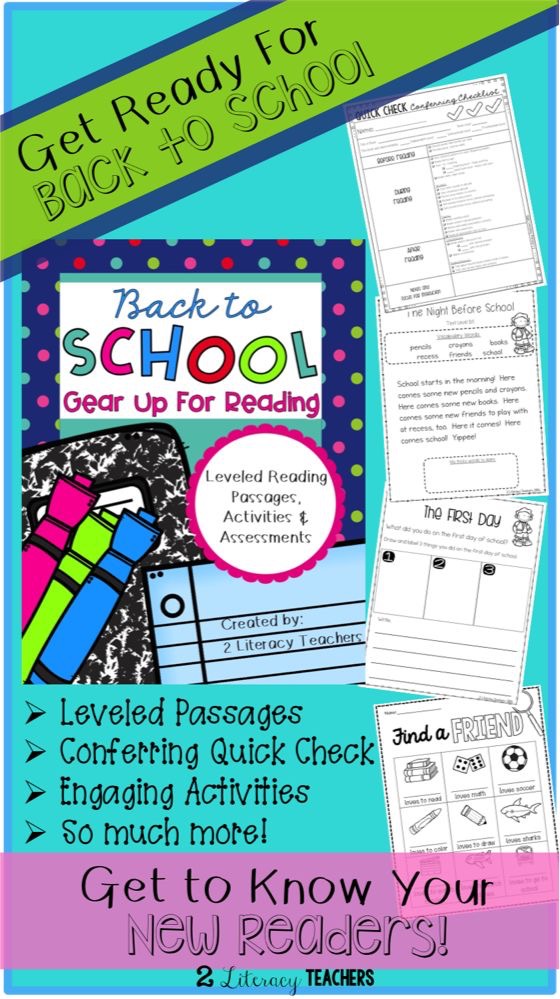
When you first get your class list, what do you think about? How many students you have in your class? Do any of them have behavior concerns? Are there students with medical concerns? We do those things to. But very quickly, we grab the calculator and the students’ reading scores from the end of the previous year, and start figuring out percentages. What percentage of students are at or above grade level? What percentage are six months or more below grade level? Percentages are the way we measure the success of what and how we are teaching. We check them early and often and it is one of the first things we do. You see, we have always taught at Title schools, and we typically have up to 75% of our students reading BELOW grade level coming into our classes at the beginning of the year. Yep, you read that correctly. But whether your percentages of below grade level students are high or low, these are the students that you need to get going quickly! There is not a minute to waste! So whether you are just starting the school year or have a student below grade level that has just moved in, here are some tips to get them off to the best…and quickest start.


1. Make these students a priority from day one. If you knew that you could change a child’s life by giving them a drink of water every day, would you do it? Of course you would! More than any of your students, these students need you to provide what they need every single day, their drink of water so to speak, so their reading life will be “saved.” So keep them at the front of your mind when you are doing everything…from teaching to arranging seating. Elevate your lowest readers to a high priority status.


2. Know your students’ needs right now. Within the first week of school, we continue to prioritize these students by listening to them read something. In just a few minutes, you can tell what they already know about reading, and what they need to work on. Write these things down because they will give you teaching points until you get your “official” assessments completed. Two of our favorite experts in the field of helping struggling students once said, “For every child we must know by standard, who has mastered them and who hasn’t.” (Mike Mattos and Austin Buffum from Solution Tree). We live by that great advice, and by listening to your students right out of the gate, you will begin to know that too.

3. Get easy books in their hands right away. These students need to be reading high success texts every minute that they can and for far more minutes than your capable readers! If need be, hand them a stack of books you know they can read for now. You will teach them how and where to find books in your class on their own soon enough, but just get them reading for now. Amid the chaos of the first few days, we always make it a priority to put out stacks of books and just let kids read for as long as possible…(or for kinders….”read.”) It provides an important kickstart to reading time after the long summer, and provides a peaceful lull in the chaos of those first few days.


4. Teach them three things the first week. Grab that list of things you wrote down when you listened to these students read, and pick three quick things that you can teach each child this week. Whether it is knowing the letter name for the first letter of their name, reading a new sight word, decoding a complicated vowel combo you noticed the student needed (eigh?), or finding the root word in a long word to help decode it, teach them three quick little things. You will build their confidence by giving them quick successes and you will get them off to the fast start that they need.


Now that they are off to a good start, what do you do?
1. Continue to make them a priority in every way that you can. After all, they need the most help and your best help all day every day.
2. Finish your “official” assessments. Most schools have the DRA, the Fountas & Pinnell BAS, or some other required reading assessments that will give you even more information about your students’ needs. Analyze them and add to each student’s list of needs as soon as you can. These will provide laser focus for your differentiated teaching for the near future, and keep the momentum of learning going.
3. Work on those “stepping stones” in your small groups. Never, ever would we teach without small groups, no matter the students’ grade level! It is one of the most important times of your whole reading block, because this is when you can guide and support your readers, whether low or high readers, at their level and on the individual skills that they need. This is the time to work on those “stepping stone” skills that you noticed when you first listened to the students read, and that you noticed when you did your assessments. So get out those lists, group your students, and get teaching. There is not a minute to waste!

We wish you the very best of luck with your teaching. We know it is a daunting task to meet the needs of all of your students. After all, we face the marching orders of getting the 70 – 75% percentage of below grade level readers flipped around to 70 – 75% on grade level, each year. If you ever have any questions or just need some new ideas on how to differentiate because your teacher “toolbox” has run out, please feel free to connect with us. We’ve love to share practical strategies that really work for teaching every level of reader.
And if you need something to get you started for the beginning of the year, we offer this Back to School set in our Teachers Pay Teachers store.


Have a wonderful year and Happy Teaching!

